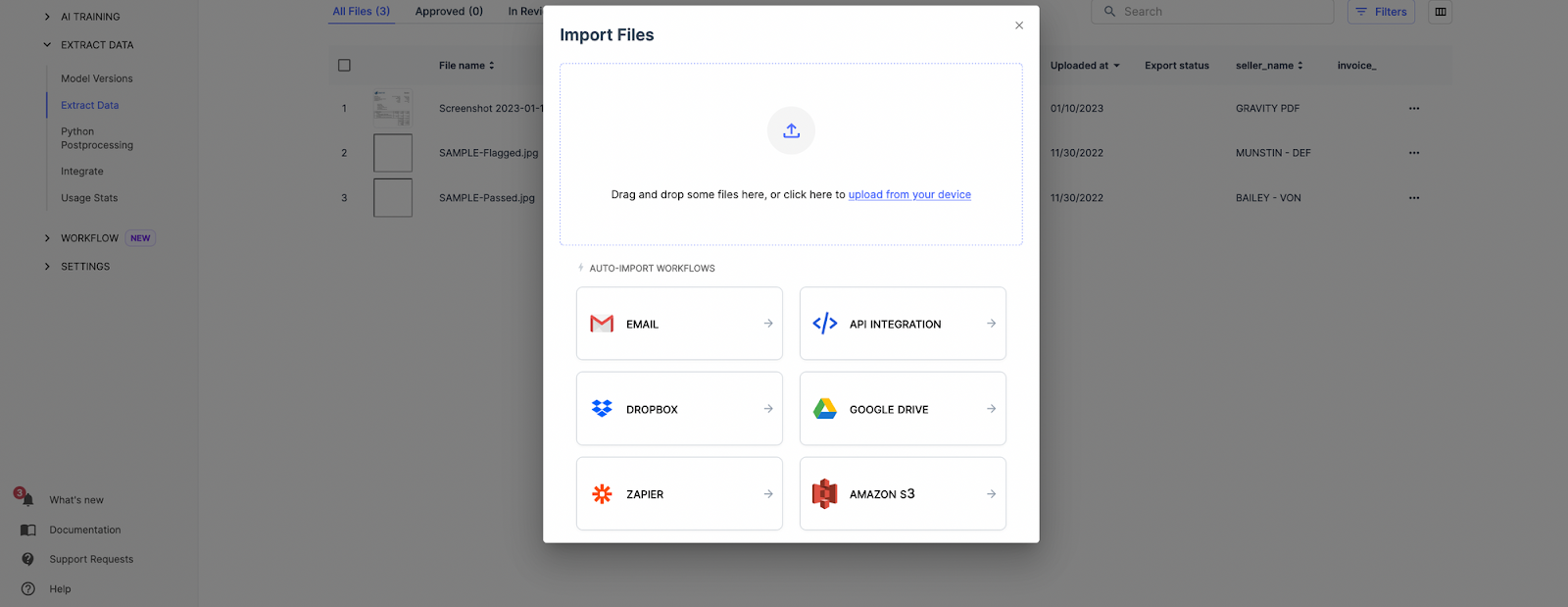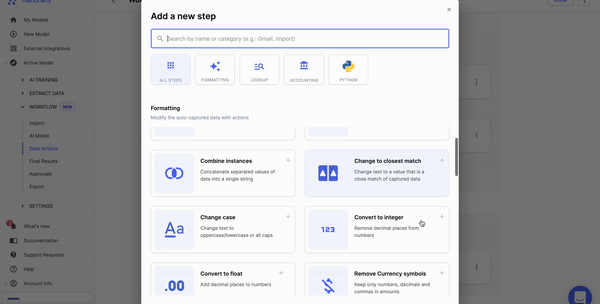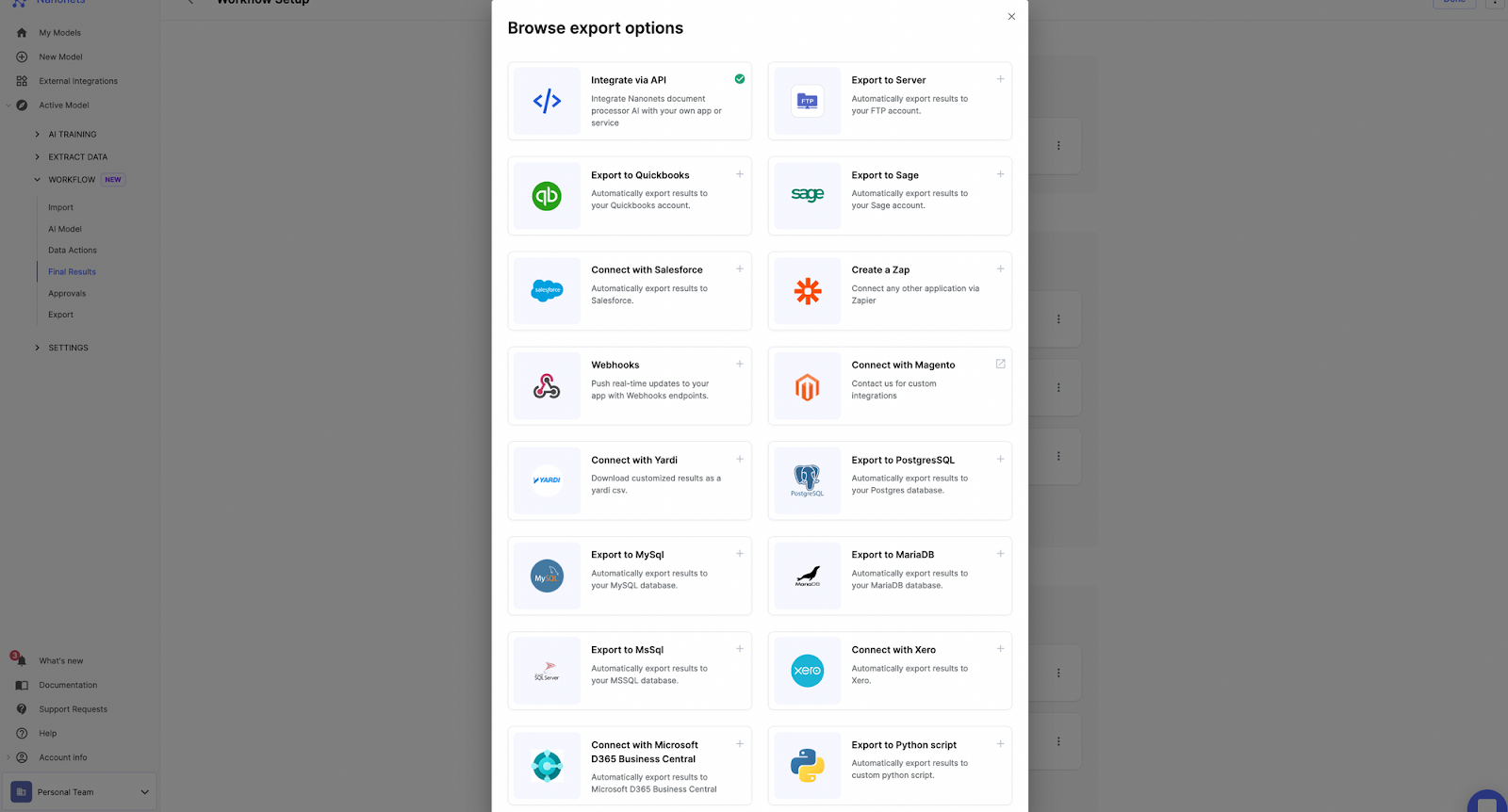Every day 2.5 quintillion bytes of data are generated.
But data exists in silos, far from where it can be used.
To use data successfully, companies must invest in data ingestion to collect data from silos into a single, unified storage system. Data ingestion is also easy to implement and automate. Let’s learn what data ingestion is, how it works, and how to automate it.
What is data ingestion?
Data ingestion refers to the process of collecting and importing data from various sources into a storage system or a data processing system.
In other words, data ingestion is the process of extracting data from multiple sources like social media platforms, websites, sensors, and more, to make it useful for further analysis. Data ingestion helps identify trends and generate insights that can be used to make informed business decisions.
Types of data ingestion:
There are mainly three types of data ingestion, which are as follows:
Batch data ingestion:
Batch data ingestion is a process in which data is ingested at regular intervals. Intervals can be hourly, daily, or weekly. This process involves ingesting data in large volumes and most of the data processing is done offline.
Batch data ingestion is best suited for scenarios where the the data is not time sensitive, and a delay of a few hours or days will not affect the analysis.
For example, data intake from a CRM system or a financial system.
Data ingestion in real time:
Real-time data ingestion is the process in which data is ingested as soon as it is generated or received. This type of ingestion is ideal for scenarios where the data is time sensitive and requires immediate analysis.
An example would be stock market data, social media posts, or website clicks.
Data ingestion in near real time:
Near real-time data ingestion is a process in which data is ingested within minutes of its generation.
This is best when you need to analyze the data and act on it quickly, but a few minutes of processing delay is acceptable. For example, when IoT devices generate user data and share it with servers.
How does data ingestion work?
Here are the steps showing how to do data ingestion:
- Identify data sources: You must identify the data sources to collect data. These can be CRM databases, folders, APIs and more.
- Data extraction: Once the sources have been identified, you can start extracting data from the sources. Platforms like Nanonets can help you extract data from any type of source, document or image.
- migrate data: Now, you need to move the extracted data to a centralized location, a data warehouse, or a data lake.
- transform data: Now, the data needs to be validated and transformed. This may involve cleaning and enriching data to make it more useful for analysis.
- Synchronize data with data storage: Finally, the validated and transformed data is uploaded to the central location, where it can be analyzed using various tools and techniques.
How to automate data ingestion?
Data ingestion follows mechanical rules and can be automated using data ingestion tools.
Data ingestion tools are software applications that automate the process of collecting, integrating, and processing data from multiple sources. These tools usually have features such as:
- data connectors: easy integrations with various sources to collect data
- loc: In case you have to extract data from documents, you should also have OCR built into the system.
- Data dispute: An easy way to automate the transformation, cleaning and formatting of data in real time.
- Data validation: The data ingestion tool allows you to validate data from third-party sources to ensure data accuracy and completeness.
- Data processing and upload to store the data in a centralized repository.
Nanogrids for data ingestion
Nanonets is an AI-powered data entry automation software that connects 500+ disconnected data sources in real time. Nanonets has built-in OCR software and workflow automation capabilities to automate any manual data processing in minutes.
Nanogrids can be used to:
And more.
It is that simple to automate the ingestion of PDF invoice data from Gmail
Access either create a new account in nanogrids
Select the OCR invoice model.

You can select Gmail and connect your Gmail account from the file import options. Each time you receive an invoice, it will be processed and the data stored in a location of your choice.

Document import options in Nanonets
Now come the rules. What do you want to do with the data? You can set up rule-based, no-code workflows to perform many tasks, such as formatting the date, searching the database, matching data, removing commas, capitalizing data, and more.

Data transformation options in Nanonets
Once you have processed the data, you can share it with your business applications using the data export options in Nanonets.

Data export options in Nanonets
It is very easy to set up data ingestion on Nanonets. You can start doing it yourself or contact our experts who can help you set up workflows for your use case.
What are the challenges you face during data ingestion?
Data ingestion involves collecting data from multiple sources. Ensure the quality of the data being ingested, as all sources have different formats, syntax, and missing values. Additionally, some of these sources may be confidential or sensitive, creating privacy and security risks.
Performing data ingestion for single digit sources is different than handling more data sources. The infrastructure and bandwidth of resources required to handle large-scale data ingestion can be complex and costly if not automated.
How to mitigate data ingestion challenges?
You can implement automated workflows to perform data quality checks, profiling, and cleansing to improve data quality. Automatic data normalization across multiple sources can save time and money.
You can scale data ingestion with automated platforms like Nanonets, which can handle large-scale data ingestion without requiring significant infrastructure investments. Such a platform can also ensure the constant implementation of data security protocols, thereby improving data security.
The future of data ingestion:
According to a report from Research and marketsThe global data ingestion market is expected to grow at a CAGR of 23.3% from 2021 to 2028. This high growth is driven by the increasing adoption of automated solutions and the need for real-time data processing for instant insights .
Another Gartner report predicts that by 2023, more than 50% of organizations will use automated data processing platforms to simplify and streamline data integration.
With the increasing volume, variety, and velocity of data generated in today’s digital landscape, data ingestion will continue to play a critical role in enabling businesses to unlock the full potential of their data.
frequent questions
What are the benefits of data ingestion?
- Data ingestion allows large amounts of data from disparate sources to be collected and integrated into a centralized system, providing a more comprehensive view of a company’s operations and performance.
- It helps improve decision making by enabling faster and more accurate data analysis, leading to better insights and informed decisions.
- Data ingestion can save time, reduce costs, and improve efficiency by automating data ingestion processes and reducing the manual work required to collect and integrate data.
- It enables data-driven innovation by facilitating the exploration of new data sources and allowing experimentation and testing of new ideas based on the analysis of integrated data.
- Data ingestion can also provide a competitive advantage by allowing companies to respond more quickly to changing market conditions and customer needs by providing real-time insight into customer behavior and market trends.
How does data ingestion help companies?
- A recent study showed that companies implementing data ingestion processes could save up to 50% of the time spent on data integration and processing, reducing the time it takes to analyze data and make informed decisions.
- Another study found that automating data ingestion can deliver cost savings of up to 70% compared to manual data ingestion processes, reducing the need for human resources and increasing efficiency.
- By implementing data ingestion processes, companies can reduce the risk of data errors, which can save time and money in the long run. According to one study, data errors cost US businesses an estimated $3.1 trillion a year.
Nanonets have many interesting use cases tThat could optimize your business performance, save costs, and drive growth. Give Nanonets a try to see how you can automate data processes on the fly.






